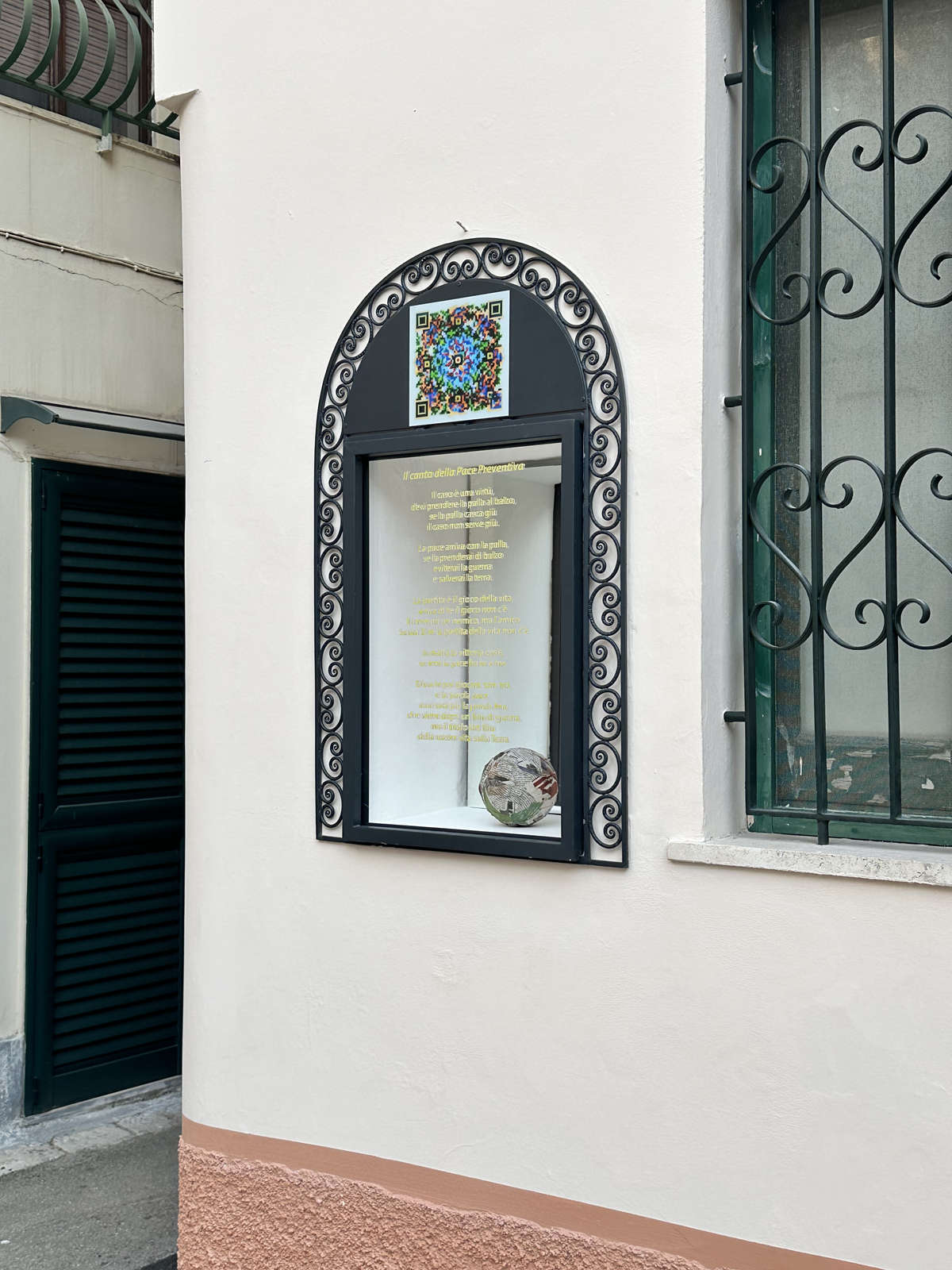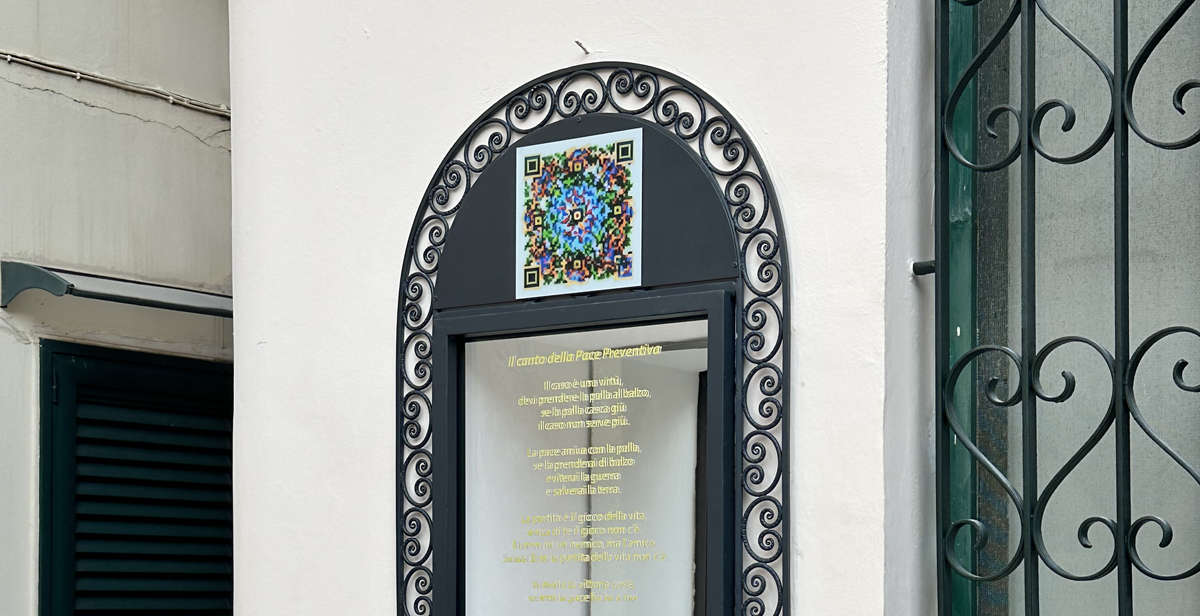A new work by Michelangelo Pistoletto in a village in the province of Lecce. L’edicola del Canto della pace preventiva, a work created by the Piedmontese artist for the Salento municipality of Parabita, is inaugurated today. The work completes the Votiva project, which aims to create a permanent contemporary art collection, accessible to all, starting with the reactivation of the votive wayside shrines that dot the village’s historic center.
The opening ceremony will be held today at 8:30 p.m. in the widening at the foot of the steps of the Church of St. John the Baptist, on Lopez y Rojo Street, where Pistoletto’s work is located. The event will also feature Adrian Paci, who will present a Lectio Magistralis introduced by “Votiva” co-curator Laura Perrone. The meeting will be preceded by greetings from the Mayor of Parabita Stefano Prete, a brief introduction to the project by co-curator Flaminia Bonino, and a talk on Pistoletto’s work by Raffaela Zizzari, Ambassador of the Third Paradise. Guided tours of the votive wayside shrines will follow.
The aedicule of Michelangelo Pistoletto’s Song of Preventive Peace, created specifically for Parabita, features a sphere of newspapers and the Song of Preventive Peace reflected in a mirrored surface, typical of Pistoletto’s language, with a QR code that activates an additional level of reading the work. This site-specific installation continues Pistoletto’s commitment to creating art as an engine of social transformation and offers an important invitation to peace.

Votiva, the brainchild of Mayor Stefano Prete and under the artistic direction of Giovanni Lamorgese, with the curatorship of Laura Perrone and Flaminia Bonino and the support of Councillor Francesca Leopizzi, is part of the larger Parabita for the Contemporary project. This project sees for the first time the City of Parabita commissioning a selection of artworks specially created for the occasion and signed by sixteen internationally renowned contemporary artists.
The artists featured in Votiva include Francesco Arena (1978, Torre Santa Susanna), Chiara Camoni (1974, Piacenza), Ludovica Carbotta (1982, Turin), Claire Fontaine (an art collective formed by Fulvia Carnevale and James Thornhill, founded in 2004 and based in Palermo), Gianni Dessì (1955, Rome), ektor garcia (1985, Red Bluff, USA), Helena Hladilová (1983, Krom??íž, Czech Republic), Felice Levini (1956, Rome), Claudia Losi (1971, Piacenza), K.R.M. Mooney (1990, Seattle, USA), Liliana Moro (1961, Milan), Adrian Paci (1969, Shkodër, Albania), Mimmo Paladino (1948, Paduli), Luigi Presicce (1976, Porto Cesareo), Michelangelo Pistoletto (1933, Biella), and Namsal Siedlecki (1986, Greenfield, USA).
The works, conceived for the occasion, form an itinerary through the historic center of the village, inviting visitors to rediscover its spaces by following the thread of votive aedicules. Originally born as a testimony to popular spirituality, these aedicules have become a distinctive feature of Parabita’s architectural landscape and now create a fertile ground for the regeneration of the community fabric, transforming themselves into spaces of artistic expression for citizenship. The program aims to strengthen the link between community and tradition, opening new avenues toward creativity and innovation through targeted interventions that see contemporary art as a valuable engine for growth and change.
 |
| Pistoletto's new work: a newsstand in a Salento village |
Warning: the translation into English of the original Italian article was created using automatic tools. We undertake to review all articles, but we do not guarantee the total absence of inaccuracies in the translation due to the program. You can find the original by clicking on the ITA button. If you find any mistake,please contact us.